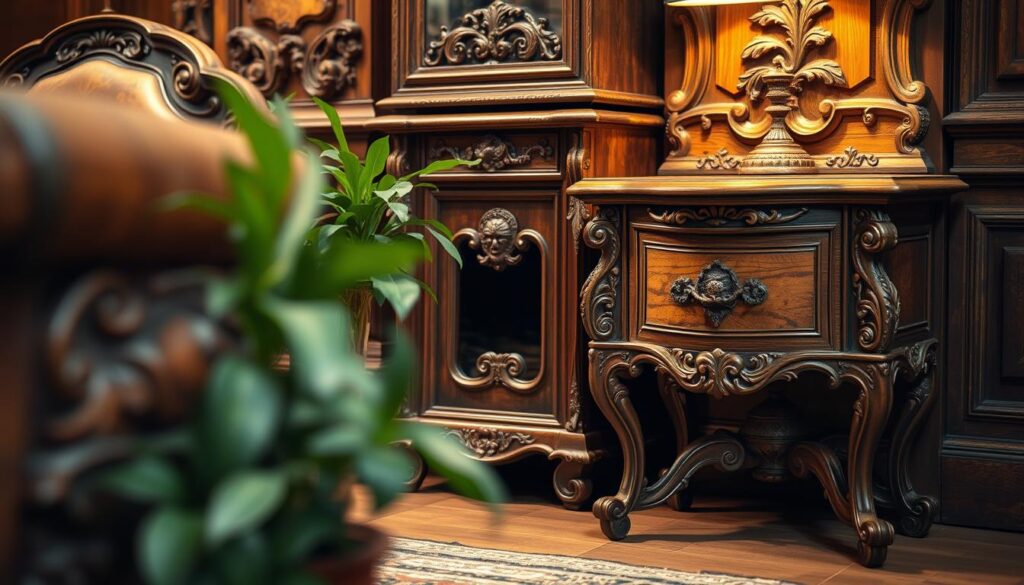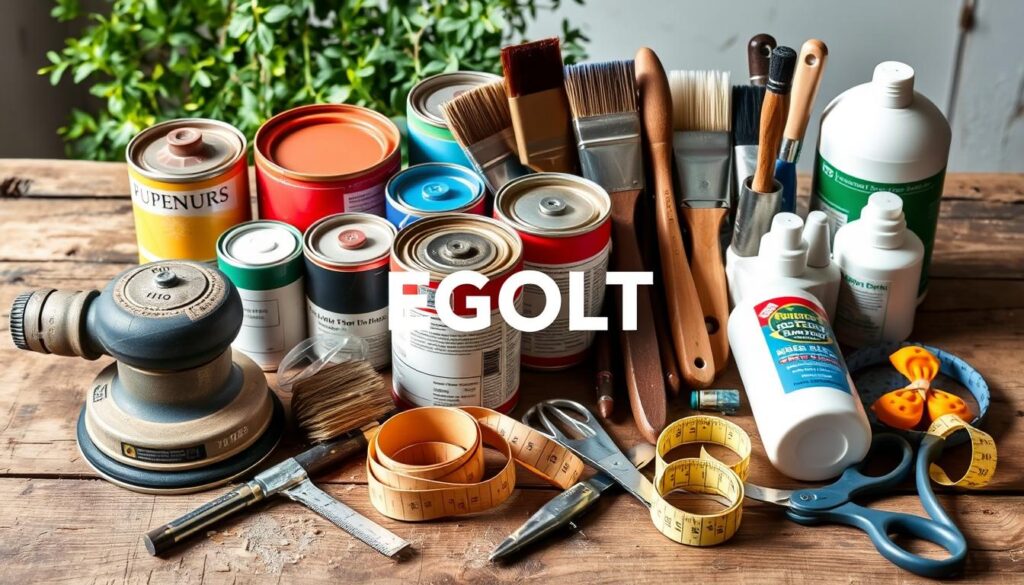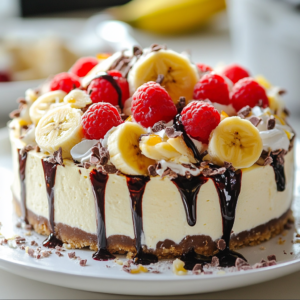In today’s fast world, upcycling furniture is a fun way to give old items new life. You can turn a vintage dresser or a thrift store find into something special. It’s not just about making your home look good; it’s also good for the planet.

Think about turning an old armchair or side table into a beautiful piece for your living room. Upcycling furniture lets you be creative and have fun. You can paint it, add patterns, or refinish it to make it look brand new.
Key Takeaways
- Discover the joy and satisfaction of upcycling old furniture into unique home decor
- Learn how to breathe new life into forgotten pieces and transform them into modern masterpieces
- Explore the environmental benefits of upcycling and the cost-saving advantages it offers
- Unleash your creativity and personalize your living space with one-of-a-kind upcycled furniture
- Embark on a sustainable and rewarding journey of furniture transformation
Understanding the Art of Furniture Upcycling
Furniture upcycling is a creative way to give old furniture a new life. It saves money and helps the environment. By transforming old items, you support a circular economy and reduce waste.
Benefits of Upcycling vs. Buying New
Upcycling has many benefits over buying new furniture. It keeps the unique charm of old pieces and adds a personal touch. Plus, it’s often cheaper, making it a budget-friendly option.
Environmental Impact and Sustainability
Upcycling is good for the planet. It reduces the need for new materials and cuts down on waste. By giving old furniture a new life, you help create a greener future.
Cost-Effective Home Decoration
Upcycling can make your home look amazing without breaking the bank. With some creativity, you can turn old furniture into unique, stylish pieces. It’s a way to express your style while saving money.
| Buying New Furniture | Upcycling Furniture |
|---|---|
| Expensive | Cost-effective |
| Contributes to waste | Promotes sustainability |
| Lacks personalization | Allows for customization |

“Upcycling furniture is not just a hobby; it’s a way of life that allows us to create unique, sustainable, and cost-effective solutions for our homes.”
Essential Tools and Materials for Furniture Transformation
Turning old furniture into unique pieces needs the right tools and materials. Whether you’re aiming for a retro style or want to revive heirloom pieces, having the right equipment is key. Let’s look at the essential tools for a successful makeover.
Basic Hand Tools
- Sandpaper (ranging from coarse to fine grits)
- Paintbrushes (different sizes for various applications)
- Screwdrivers (flat-head and Phillips head)
- Hammer
- Pliers
- Measuring tape
- Utility knife
Power Tools
- Electric sander (orbital or belt sander)
- Drill (with assorted drill bits)
- Rotary tool (for intricate details)
- Jigsaw (for cutting shapes and patterns)
Paints and Finishes
The right paint and finish can change your furniture’s look and feel. Use chalk-based paints, latex paints, and wood stains for different effects. Don’t forget protective topcoats to keep your work looking good.
| Product | Description | Best Use |
|---|---|---|
| Chalk Paint | Matte, velvety finish that adheres well to surfaces | Distressed, vintage-inspired looks |
| Latex Paint | Durable, easy-to-clean paint with a range of sheen levels | Modern, sleek furniture transformations |
| Wood Stain | Enhances the natural grain and color of wood | Highlighting the beauty of heirloom pieces |
Also, have protective topcoats like polyurethane or furniture wax ready. This will help your upcycled furniture last longer.
Safety Equipment
- Goggles
- Dust mask or respirator
- Gloves
- Apron or coveralls
Using the right tools and materials is key to making old furniture into stunning retro style pieces. With this toolkit, you’ll be ready to bring out the best in your heirloom pieces.

Evaluating Old Furniture for Upcycling Potential
Finding the right furniture to upcycle is key. Look for pieces that are both old and well-made. This way, you can turn them into something new and beautiful.
Identifying Quality Pieces
Start by checking if the furniture is well-made. Look for solid wood, dovetailed joints, and strong hardware. Stay away from pieces with big stains, cracks, or broken veneers.
Assessing Structural Integrity
Check if the furniture is sturdy. Make sure the frame is solid and the joints are tight. Try out drawers and doors to see if they work well. If it needs a lot of fixing, it might be too hard for a beginner.
Determining Project Difficulty
Upcycling can be easy or hard, depending on the project. Simple tasks like painting or staining are easier. But big changes, like turning a dresser into a TV stand, need more skill. Think about your abilities before starting a project.
| Furniture Characteristic | Upcycling Difficulty Level |
|---|---|
| Solid wood construction | Moderate |
| Veneer or laminate surfaces | Easy |
| Intricate carvings or details | Challenging |
| Significant structural damage | Difficult |
By looking at the quality, strength, and how hard it is to upcycle, you can find the best pieces. These can become amazing period furniture or classic design items.
Basic Restoration Techniques for Vintage Pieces
Restoring antique furniture or refurbished pieces is all about the basics. Whether it’s a family heirloom or a thrift find, these simple steps can revive your vintage items.
Cleaning and Conditioning
Begin by cleaning your furniture gently. Use a mild cleaner and a soft cloth to wipe away dust and dirt. Then, apply a wood conditioner to keep the wood healthy and looking good.
Minor Damage Repair
- Fix small scratches or dents with wood filler or putty.
- Use wood glue or epoxy for loose joints or wobbly legs.
- Sand the fixed areas to blend them in smoothly.
Surface Preparation
Before you start making changes, prepare the surface. Sand the furniture lightly to make it smooth. This removes old finishes and paint, helping new coatings stick better.
| Restoration Technique | Description | Benefits |
|---|---|---|
| Cleaning and Conditioning | Gentle cleaning and application of wood conditioner | Preserves the natural beauty and integrity of the wood |
| Minor Damage Repair | Addressing small scratches, dents, and loose joints | Restores structural integrity and visual appeal |
| Surface Preparation | Thorough sanding to create a smooth base | Ensures better adhesion for subsequent finishes or treatments |
Learning these basic techniques can make your antique furniture and refurbished pieces look new again. They keep their classic charm while adding a modern touch.
Creative Painting Techniques and Color Selection
Paint is key when upcycling old furniture. It can change a piece from old to new. Try chalk paint, distressing, and new colors to make your furniture look fresh.
Chalk Paint Applications
Chalk paint is loved for its smooth finish and easy use. It sticks well to many surfaces, like wood and metal. Play with different ways to apply it to get cool textures.
Distressing Methods
Distressing gives furniture a worn look. You can sand, beat, or chip it to get that vintage feel. Find the right amount of wear to match your style.
Color Schemes and Trends
Colors are endless. Watch for new trends in vintage decor to get ideas. Soft colors can feel cozy, while bold ones make a statement. Mix colors to find the perfect look for your furniture.
Get creative with furniture upcycling. Paint can turn old into new. With many techniques and colors, you can make unique pieces that stand out.
Transforming Old Furniture into Modern Masterpieces
Give your old furniture a new look by turning it into stylish, modern pieces. This way, you can mix vintage charm with today’s design. Upcycling lets you create unique repurposed furniture that adds a special touch to your home.
Whether it’s an old dresser, a worn-out armchair, or a forgotten side table, creativity is key. By blending classic and modern elements, you can make old furniture look new again. This way, you can make your living space truly stand out.
Embracing the Old and the New
Upcycling is all about finding a balance between old and new. Think about adding vintage hardware or antique finishes to your design. Then, add modern touches like clean lines, bold colors, or simple shapes.
- Paint an old dresser in a bright, trendy color and change the hardware to modern knobs.
- Update a classic armchair by reupholstering it in a bold fabric and adding mid-century wooden legs.
- Revamp a worn-out side table by sanding it, staining it in a rich color, and adding a modern metal base.
The secret to mixing old and new is to balance textures, colors, and designs. With creativity and a bit of experimentation, you can turn old furniture into modern works of art.
“Upcycling allows you to breathe new life into old furnishings, creating pieces that are truly one-of-a-kind and reflective of your personal style.”
| Before | After |
|---|---|
| Dated, worn-out dresser | Vibrant, modern-inspired dresser with new hardware |
| Tired, traditional armchair | Stylish, reupholstered armchair with mid-century legs |
| Worn-out side table | Refinished side table with a contemporary metal base |
Upholstery Basics for Refreshing Seating
Give your vintage furniture a new look with some basic upholstery skills. Whether it’s a secondhand chair or a thrifted sofa, learning the basics can make a big difference. It’s a great way to enhance your secondhand furnishings and vintage decor.
Fabric Selection Guide
The fabric you pick is crucial for your project. Think about these things when choosing the right material:
- Durability: Go for strong fabrics like cotton, linen, or microfiber for everyday use.
- Texture: Try different textures, from soft to rough, to match your style.
- Color and Pattern: Pick bold colors or classic neutrals. Don’t shy away from unique patterns.
Tools and Techniques
Having the right tools and basic skills can turn old furniture into stunning pieces. Here are some key items to start with:
- Staple gun: Essential for attaching fabric to the frame.
- Upholstery needles and thread: For hand-stitching and small fixes.
- Fabric scissors: Use sharp, quality scissors to cut your fabric cleanly.
- Tack hammer: Handy for securing trim and nailheads.
- Upholstery foam: Use it to replace old cushions or add extra comfort.
With these tools and skills, you’re ready to give your secondhand furniture a fresh, personal look.
“Upholstery is the art of transforming old furniture into new masterpieces. It’s a labor of love, but the results are always worth it.”
Hardware Updates and Decorative Elements
Upcycling vintage furniture is a fun journey. It’s rewarding to give old pieces a new life with updated hardware and decorations. Whether it’s a piece from a bygone era or a classic design, the right hardware and decorations can change its look and function.
Selecting Appropriate Hardware
Choosing the right hardware is key. It should match the furniture’s style and era. For a vintage or antique look, consider:
- Ornate, intricate drawer pulls and knobs
- Hinges with a distressed or aged finish
- Decorative escutcheon plates for a touch of elegance
For a modern, minimalist look, choose:
- Sleek, streamlined handles and knobs
- Simple, clean-lined hinges
- Subtle hardware accents that let the furniture’s natural beauty shine
Adding Decorative Flair
Decorative elements can really make a difference. Think about adding:
- Decorative molding or trim to enhance the piece’s visual interest
- Stenciled or painted designs to create a unique, personalized touch
- Vintage-inspired hardware such as corner brackets or ornamental feet
Choose decorative elements that fit the period furniture or classic design you’re aiming for.
| Hardware Style | Furniture Type | Decorative Element |
|---|---|---|
| Ornate, Antique | Vintage, Antique | Decorative Molding, Ornamental Feet |
| Sleek, Modern | Contemporary, Mid-Century | Stenciled Designs, Minimalist Accents |
By picking and installing the right hardware and decorations, you can turn your upcycled furniture into a stunning piece. It will show off your unique style and vision.
Converting Old Furniture for New Uses
Give your old furniture a new lease on life. Turn a dresser into an entertainment center or a table into a storage spot. The world of repurposed furniture and heirloom pieces is full of possibilities. Let’s dive into some creative ways to modernize your old furniture.
Dresser to Entertainment Center
Got an unused dresser in the spare room? Turn it into a modern entertainment center. Take out the drawers and add shelves for your TV and gadgets. Paint it a bold color for a fresh look. Now, your dresser is the star of your living room.
Tables to Storage Solutions
Make vintage tables into smart storage spots. An old end table can become a cool bathroom vanity with a vessel sink. A big, solid wood table can be a kitchen island with drawers and shelves.
Even a simple coffee table can become a storage ottoman. Use the inside for blankets, magazines, or other essentials.
Think creatively to give your heirloom pieces a new role. With some effort and imagination, your old furniture can be the heart of your home.
Finishing Touches and Protective Coatings
Applying the right finishing touches and protective coatings is key to making your upcycled furniture last. Whether you’ve given new life to an antique or made something unique, these steps are crucial. They seal your work and protect it from damage.
There are many ways to protect your upcycled furniture. You can use durable sealants, waxes, glossy lacquers, or matte varnishes. The right choice depends on the material, style, and look you want. Choosing the right protective coating is important for keeping your furniture looking good for a long time.
Protective Coatings for Upcycled Furniture
- Polyurethane: A versatile clear coating that provides a durable, scratch-resistant finish for wood surfaces.
- Wax: Offers a natural, low-sheen look while protecting against wear and tear. Great for antique furniture and distressed finishes.
- Shellac: A classic finish that seals and protects wood, creating a subtle shine. Excellent for high-traffic areas.
- Lacquer: Delivers a glossy, professional-grade finish that is highly durable and resistant to scratches and stains.
Make sure to follow the manufacturer’s instructions when applying protective coatings. With the right finish, your upcycled furniture will look amazing and last long. You’ll get to enjoy your creative work for many years.
“The true joy of upcycling lies in the ability to breathe new life into old, forgotten pieces and create something truly unique and valuable.”
Common Mistakes to Avoid in Furniture Upcycling
Starting a furniture upcycling project is exciting and rewarding. But, it’s key to watch out for common mistakes. These can ruin your creative vision. Knowing these pitfalls helps you turn old furniture into beautiful pieces that add life to your home.
Preparation Errors
Good preparation is the base of a successful upcycling project. Skipping steps like cleaning, sanding, or priming can cause problems. These include poor paint adhesion and uneven finishes. Make sure to prepare your furniture’s surface well for a smooth and lasting transformation.
Material Mismatches
Choosing the right materials is vital when upcycling furniture. Using the wrong paints, stains, or sealants can lead to issues like peeling or cracking. Do your research to pick high-quality products that work well together for a beautiful finish.
Avoiding these mistakes and focusing on good preparation and material choice lets you fully use your old furniture. This way, you can create stunning upcycled pieces that make your home’s vintage decor even better.
| Preparation Errors | Material Mismatches |
|---|---|
|
|
Styling Tips for Upcycled Pieces in Modern Homes
Adding retro style and classic design to modern homes is fun. The trick is to find the right mix of old charm and new looks. This makes your upcycled furniture stand out.
Think about your home’s style and colors first. Choose upcycled pieces that match your home’s look. Mixing old and new can make your space more interesting.
Striking the Right Balance
Here are some tips to blend old and new perfectly:
- Match your upcycled piece with modern furniture for a balanced look.
- Use modern touches, like metallics, to contrast with classic design.
- Make your upcycled item the main attraction in a room with modern touches around it.
Showcasing Unique Upcycled Treasures
Here’s how to show off your upcycled furniture:
- Set up a special area or wall to display your upcycled finds.
- Play with lighting to highlight your furniture’s texture and color.
- Add decor like plants or art to make your upcycled pieces pop.
By mixing retro style and classic design, you can make your upcycled furniture fit right into a modern home. This creates a space that’s uniquely yours and shows off your creativity.
Conclusion
Upcycling old furniture into modern pieces is rewarding and good for the planet. It gives new life to vintage items and helps make your home decor more sustainable.
We’ve talked about the benefits of upcycling, like saving money and helping the environment. We showed you the tools and methods needed. This includes how to pick, restore, and transform old furniture into special items.
If you love DIY or want to try upcycling, there’s so much you can do. Be your own designer, try new painting styles, and make your old furniture into something unique. This way, you can create special repurposed furniture for your home.



